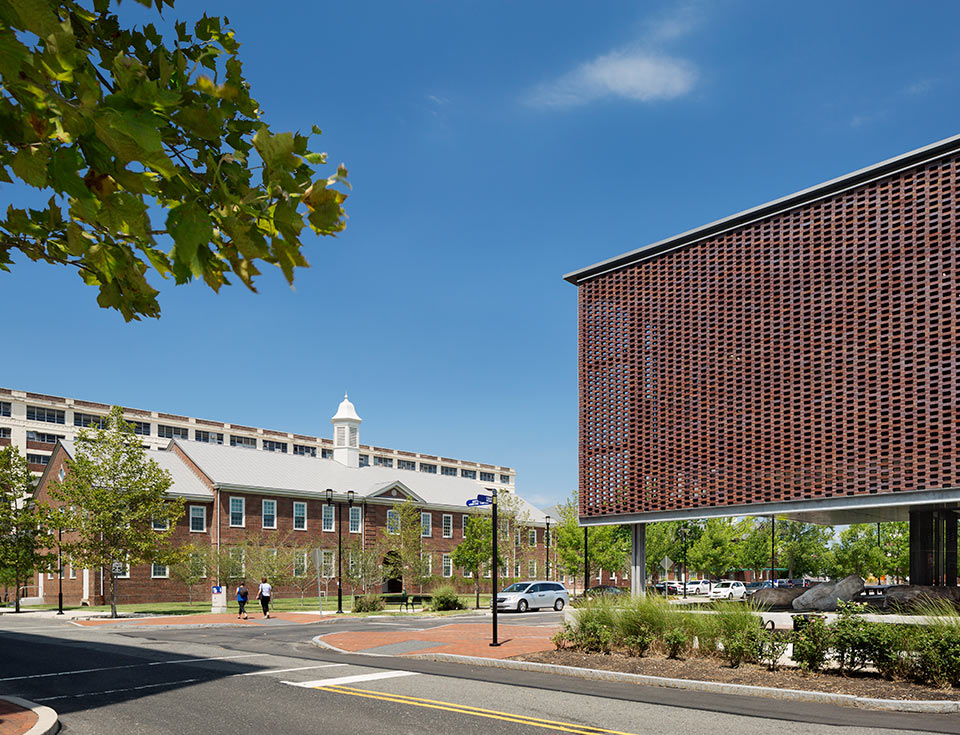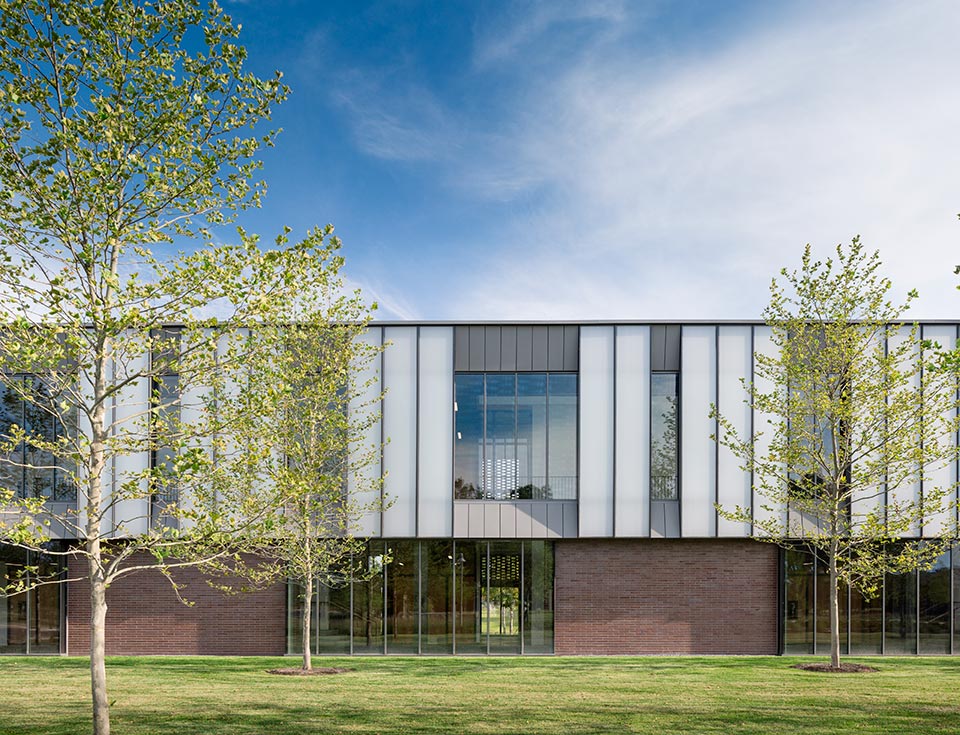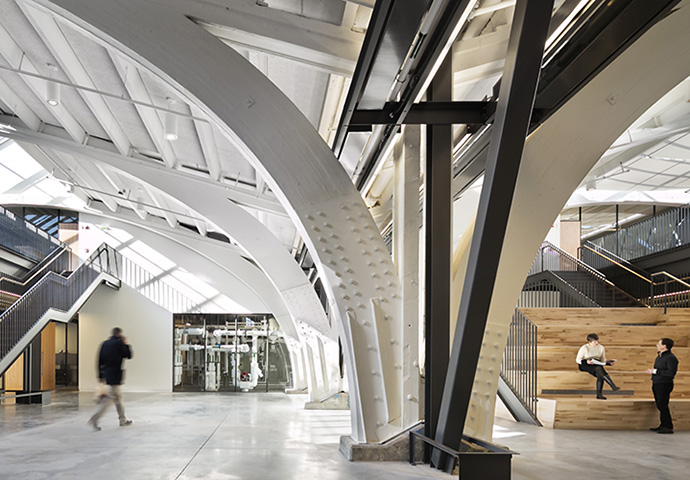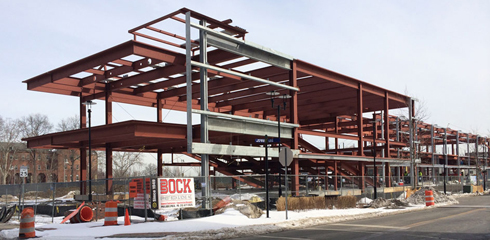Low-Tech Solutions in a High-Tech Space
The Center for Building Energy Education & Innovation in Philadelphia's Navy Yard features a brick sun shade that not only regulates heat gain and prevents harsh glares, but also visually connects the new structure with the existing buildings.
©Michael Moran/OTTO
Last month, The Architect's Newspaper blog highlighted KieranTimberlake's work on The Consortium for Building Energy Innovation (CBEI). The two-part project located in Philadelphia's Navy Yard consists of both the retrofit of an existing mid-century building and the new construction of a classroom and laboratory facility, with the goal of creating a welcoming, versatile, and above all, energy-efficient space.
Though the article touched on a variety of the project's features, including its passive solar strategies, a gray water reuse system, and geothermal wells, it mainly focused on the new building's facade. This new structure, officially called the Center for Building Energy Education & Innovation, is east-west oriented, and as such presented architects with a unique challenge: how can the building maintain a connection with the outside environment and harness natural light while simultaneously diffusing its harshness and glare? The answer to this question can be found in the facility's innovative building envelope.
Comprised of two different facades featuring two different materials, the center's building envelope uses a combination of low-tech solutions and innovative designs to increase the energy performance of the building. The south wall's facade is constructed out of brick, a material that not only pays homage to the site's history as the Philadelphia Navy Yard, but also helps to tie the new construction into the existing buildings on the campus. The staggered brick acts a sun shade, both filtering the natural light that comes into the center as well as managing heat gain. Because of its design, the facade eliminates the need for mechanical shades and allows the building to spend less energy on temperature regulation.
The double-insulated panel construction of the south façade allows an abundance of soft, diffused natural light into the space, while window gaps provide expansive views of the adjacent park.
©Michael Moran/OTTO
Contrasting with the south facade's brick construction, the north and west façades are comprised of insulated translucent panels. These panels function much the same as the brick sun shade in that they allow natural light to flood the space while also diffusing afternoon glares and harsh lighting (an important feature in a building where computer usage will be especially high). Additionally, occasional window gaps in the panel-lined façade open the building up to views of the structure's adjacent park, further connecting the facility's users with the natural world.
To read the complete article, visit The Architect's Newspaper blog here.








